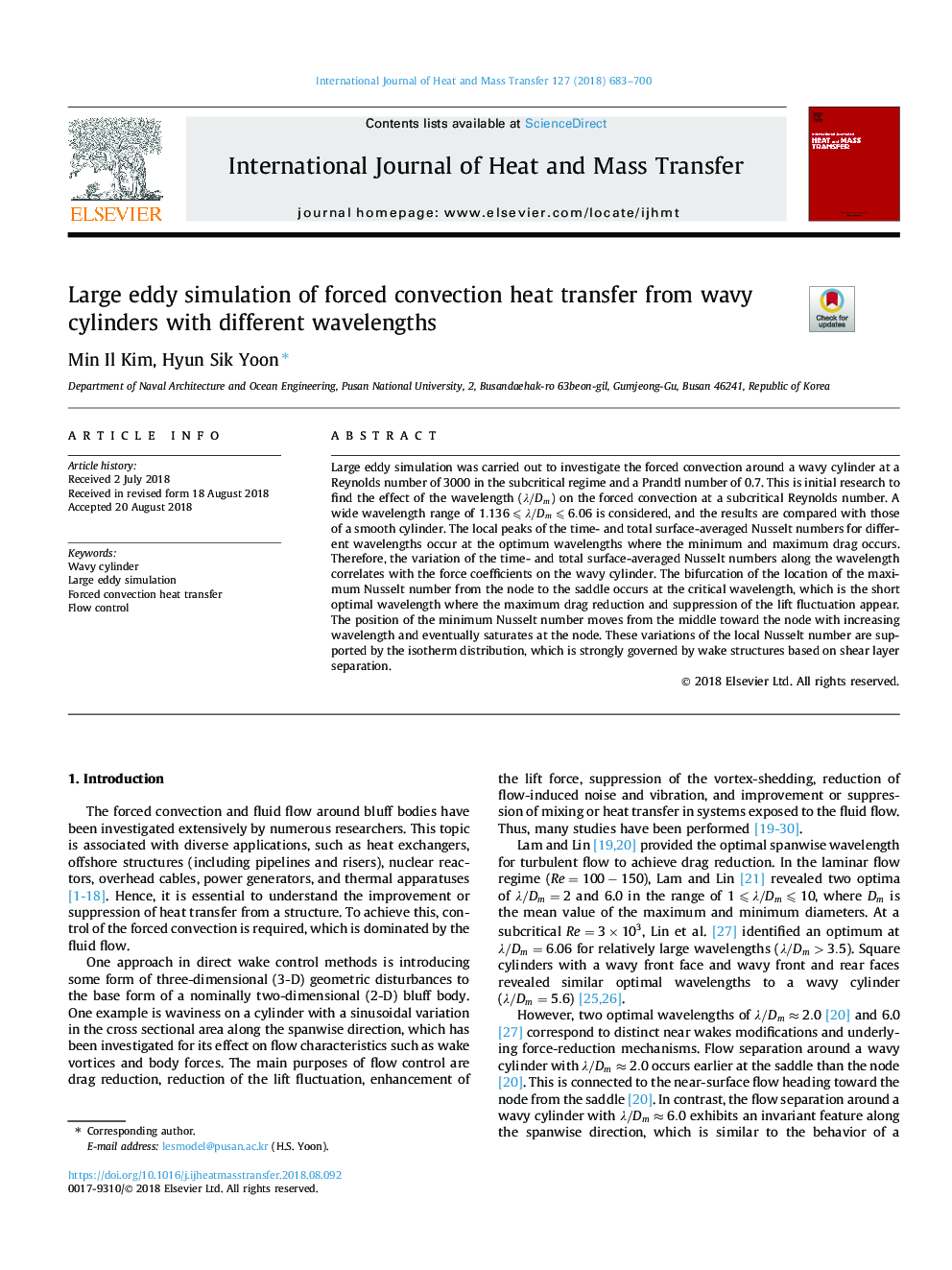| Article ID | Journal | Published Year | Pages | File Type |
|---|---|---|---|---|
| 8942019 | International Journal of Heat and Mass Transfer | 2018 | 18 Pages |
Abstract
Large eddy simulation was carried out to investigate the forced convection around a wavy cylinder at a Reynolds number of 3000 in the subcritical regime and a Prandtl number of 0.7. This is initial research to find the effect of the wavelength (λ/Dm) on the forced convection at a subcritical Reynolds number. A wide wavelength range of 1.136⩽λ/Dm⩽6.06 is considered, and the results are compared with those of a smooth cylinder. The local peaks of the time- and total surface-averaged Nusselt numbers for different wavelengths occur at the optimum wavelengths where the minimum and maximum drag occurs. Therefore, the variation of the time- and total surface-averaged Nusselt numbers along the wavelength correlates with the force coefficients on the wavy cylinder. The bifurcation of the location of the maximum Nusselt number from the node to the saddle occurs at the critical wavelength, which is the short optimal wavelength where the maximum drag reduction and suppression of the lift fluctuation appear. The position of the minimum Nusselt number moves from the middle toward the node with increasing wavelength and eventually saturates at the node. These variations of the local Nusselt number are supported by the isotherm distribution, which is strongly governed by wake structures based on shear layer separation.
Related Topics
Physical Sciences and Engineering
Chemical Engineering
Fluid Flow and Transfer Processes
Authors
Min Il Kim, Hyun Sik Yoon,
